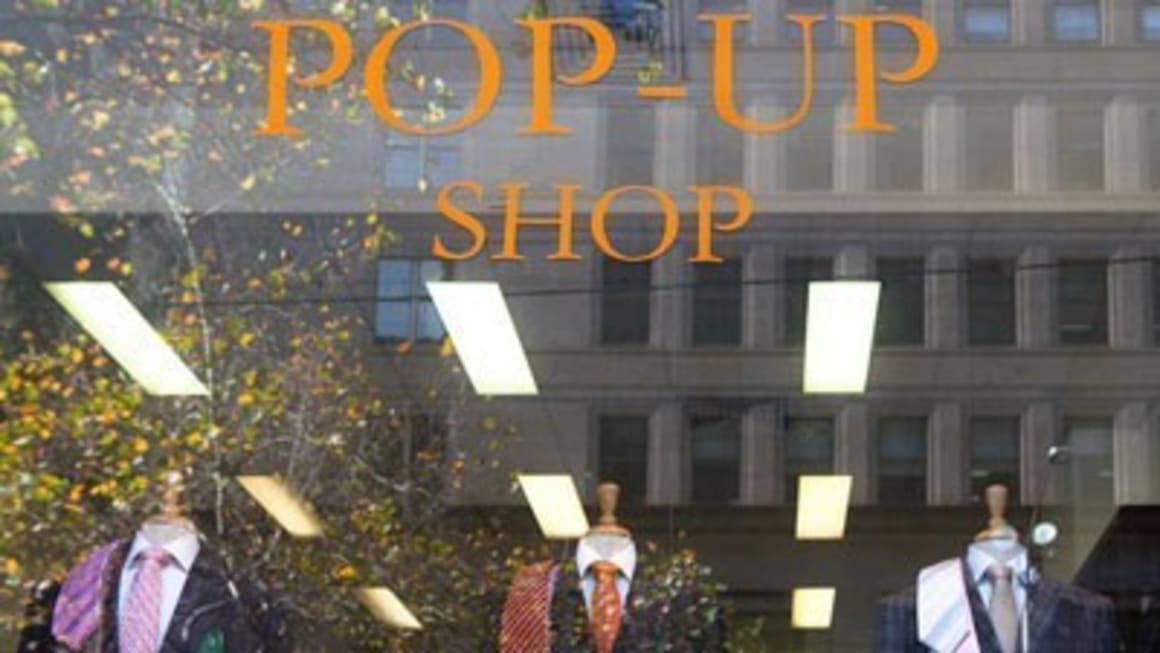Tenants test the Melbourne retail waters with increased demand for pop-up shops

Tenant demand for pop-up shops is increasing in Melbourne, with one commercial agent reporting they account for nearly 10% of leases he has signed in the last year.
CBRE associate director of retail services Max Cookes says six out of an estimated 70 leases he has signed in the last year have been pop-up shops, with demand increasing.
“There’s certainly an increased demand, many more tenants are wanting to do them,” says Cookes.
“It can be a win-win situation. Sometimes when you do a deal, especially with a big international, there’s a big leading time. They can’t hand over for six months. With a pop-up shop you can fill that shop for those six months so the landlord keeps earning income.
“You can secure a high-calibre client and maintain income at the same time.”?
In March, CBRE reported overall vacancy across Melbourne’s top 10 retail strips had fallen to 3.5% over the second half of 2011, a figure much bolstered by pop-up shops. Pop-up shop leasing has been most prominent along Bridge Road, Chapel Street, Bourke Street and the CBD.
One recent very popular pop-up shop on Chapel Street sold merchandise for boy band One Direction.
Cookes says pop-up shop lease times vary immensely.
“You lease until you find a tenant, until a permanent solution is determine,” he says. ?
“It’s very rare you do them for a few days, though. It does happen, it’s usually more clearance sales.? With pop-up shops, tenants can test the waters and see if an idea is viable.
“There’s certainly increased demand from tenants to do pop-up stores purely based on the idea that tenants can trial a market without committing to a long-term lease,” he says.
“And the rent is going to be fraction of what you would have to pay annually.”?
Cookes says there is no real formula for working out the rent pop-up shops pay.
“It’s determined by tenant demand. It’s whoever will pay the most. It really ranges. It can be $10,000 a week if it’s a high-profile location, but between $10,000 and $20,000 a month is more common.? Pop-up shops in retail strips can maintain the impression of demand.”
“Generally if it’s part of something bigger and there’s a run of five to six shops then we always push to get a temporary tenant to keep up the activation of a retail strip. However, it’s not always ideal for an owner and can make a site harder to lease,” Cookes says.
“Owners are happy to entertain it as long as it doesn’t get in the way of a leasing campaign. It can look like the owner might not be serious about getting a tenant.
“If I’m negotiating a deal with a potential tenant and the landlord is getting rent from someone else it can seem that they’re not being realistic about the rent. If it’s vacant the mindset is a little bit different. It’s easier to lease a shop that’s vacant than when it’s trading.”?
One agent Property Observer spoke to suggested that agents often didn’t charge fees given the short lease time, but Cookes disputes this.
“Of course we can charge fees. Why would we do the work if we weren’t going to get paid? We take a percentage of the total income. Sometimes we don’t bill until the end (given the ongoing nature of pop-up shops).”?
Cookes says there’s no central way for tenants to find a pop-up shop lease and they are not advertised on real estate listing portals.
“They just have to call me. Approach an agent who’s in the know.”
Retail analysts have dubbed the shoppers who flock to pop-up shops as “transumers”.
One of the most prominent city pop-up shops is the Peter Jackson store on Collins Street (pictured below), currently leased until a new international tenant moves in.

“They’re trading until we tell them they have to get out. That’s a case in point,” says Cookes.
Cookes says he’s been impressed with the level of work some operators put in.
“There’s some really good pop-up store operators. There’s people who just take them to the next level. They look like they’ve been there permanently. And there’s people who just put in shelves and put in stock. They do a job for their business, but aesthetically it’s not fantastic.”